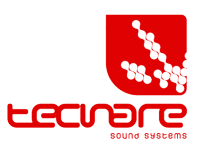Explore the World of Sound
Amplifiers and Digital Signal Processing (DSP)
Amplifiers and digital signal processors (DSP) are two of the most important components in the professional audio chain. While amplifiers provide the necessary power to drive speakers, DSP processors enable adjustments and optimizations to improve sound quality, correct acoustic deficiencies, and protect audio systems.
In this article, we will explore in detail how amplifiers work, the different types of amplification, digital signal processing technologies, and their application in professional sound systems.
Channel Structure, Equalization, Preamplification, and Signal Paths
Featured Articles
Tecnare
Loudspeakers Series
E Series
IBZA Series
V Series
ALIS Series
Array Series
SW Series
KT Series
TANIT Series
CS Series
Amplifiers Series
Digital Processors
Accessories
AUDIO
